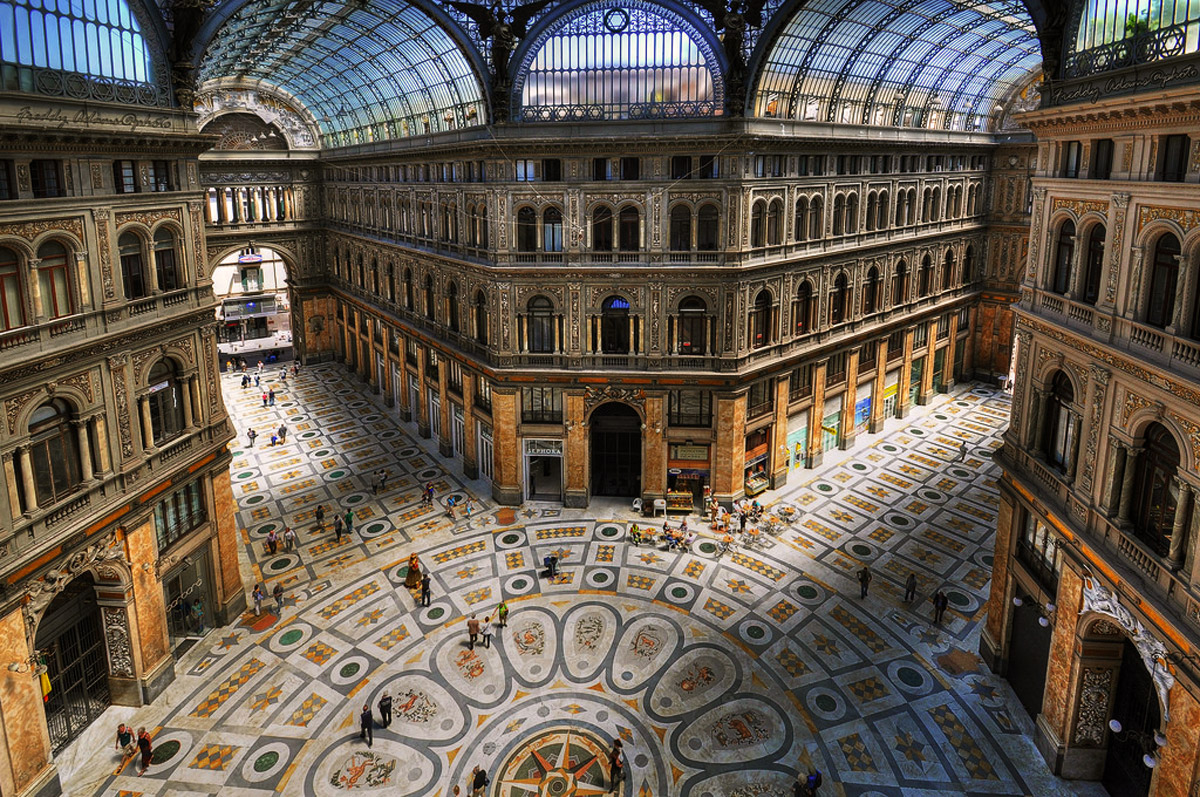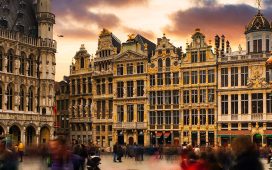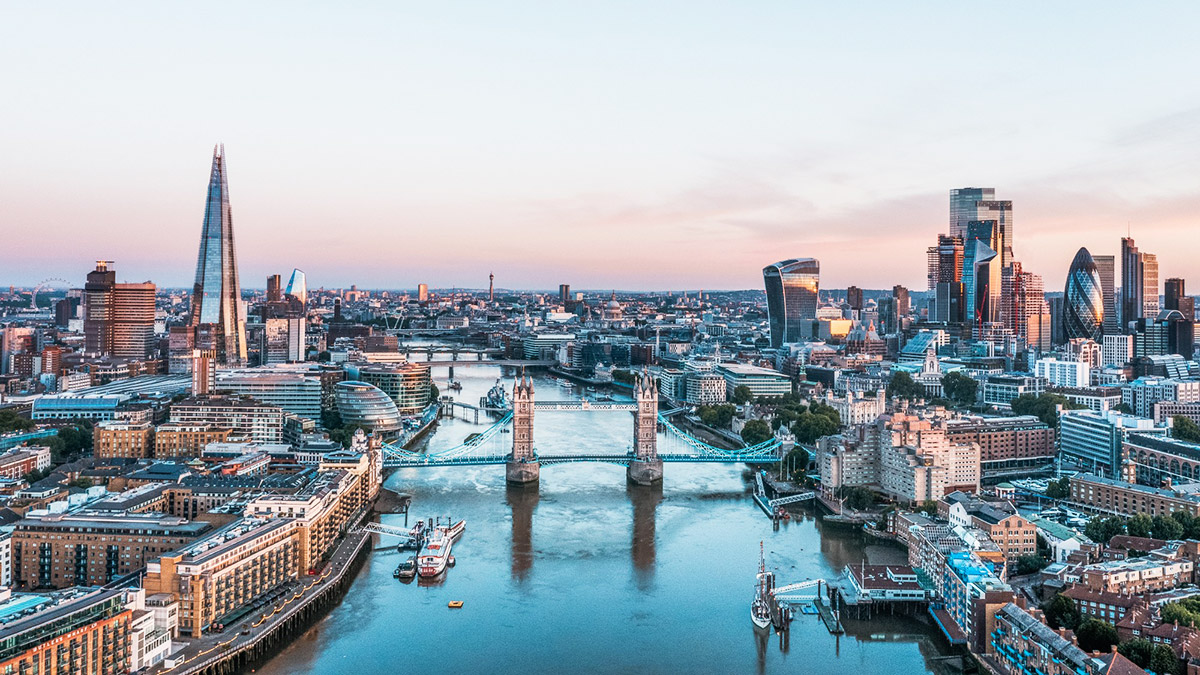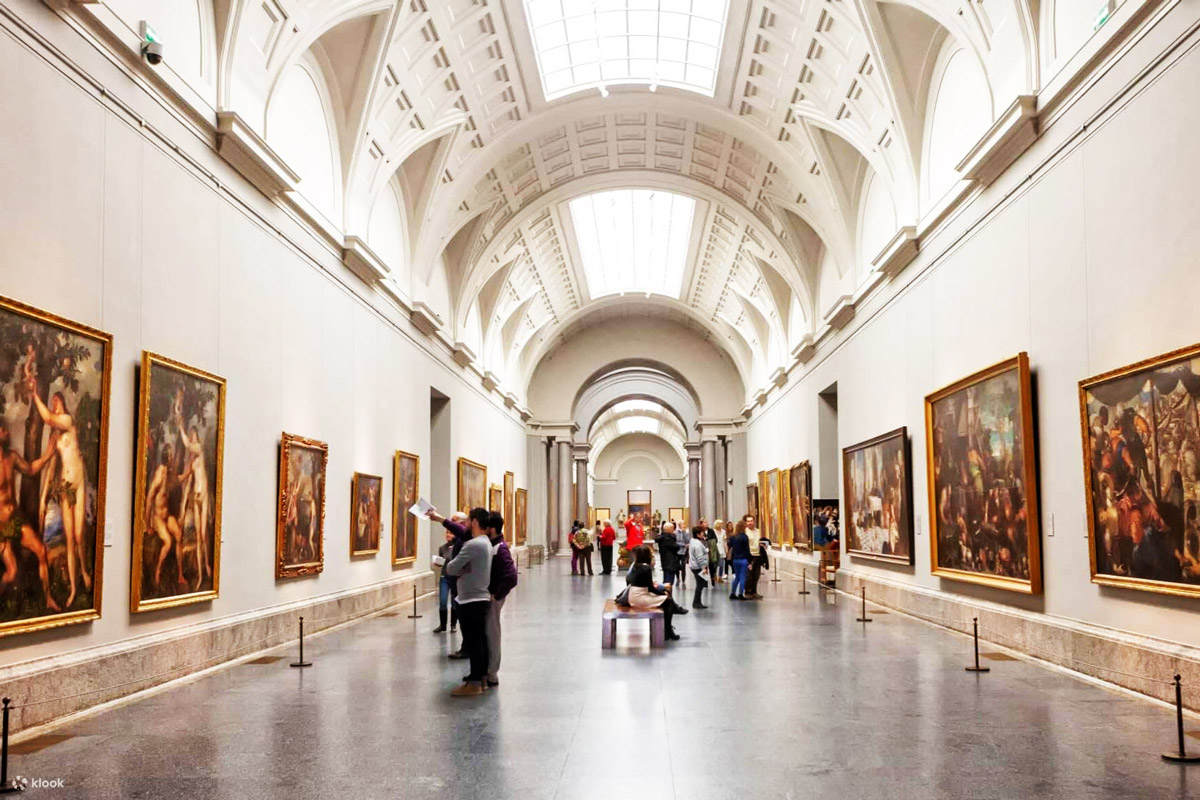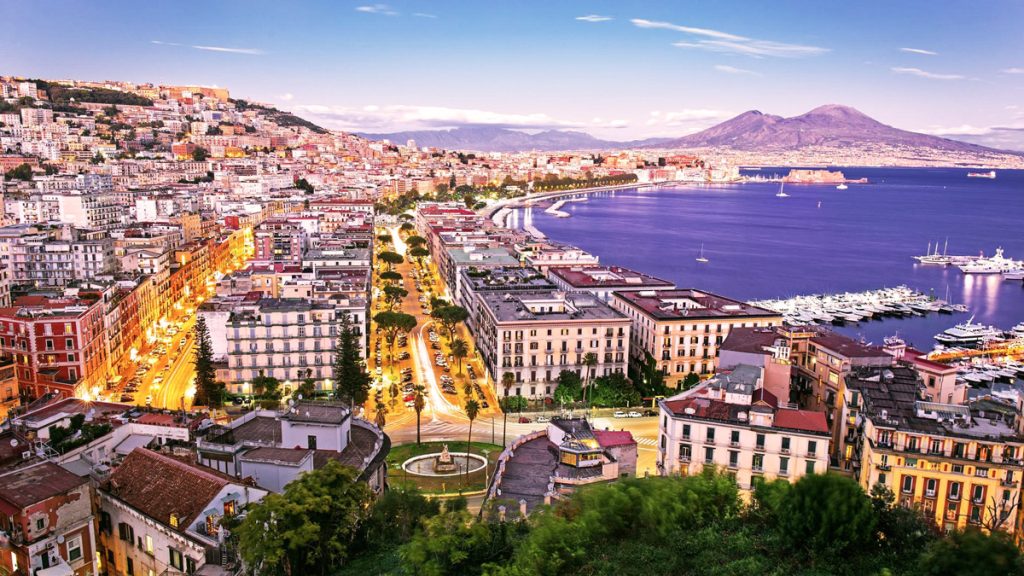
Naples—Napoli in Italian—is a city that immediately sweeps you into its rhythm. Even its name carries a sense of vitality, echoing centuries of history, passion, and tradition. The sound of vespas weaving through traffic, the smell of pizza dough rising from wood-fired ovens, and the sight of Mount Vesuvius dominating the skyline all create a scene that’s uniquely Neapolitan. This isn’t a city that gently introduces itself—it bursts into your senses, raw and unapologetically authentic.
History of Naples
Naples’ history is as vibrant as its streets. Founded by Greek settlers as Neapolis (“new city”) in the 8th century BCE, it became an important part of the Roman Empire, dotted with villas and amphitheaters. Over centuries, Naples fell under Byzantine, Norman, Spanish, and Bourbon rule, each leaving architectural and cultural imprints. Its proximity to Mount Vesuvius meant it often lived in the shadow of disaster, most famously the eruption that buried Pompeii. Despite hardships, Naples flourished as a center of art, music, and cuisine, giving the world treasures from Caravaggio’s paintings to pizza. Today, its history is alive in its piazzas, palaces, and underground passages.
Landmarks & Architecture
Naples is a city where every corner reveals a new layer of history.

- Castel dell’Ovo – The oldest castle in Naples, perched dramatically by the sea. Local legends speak of a magical egg hidden in its foundations.
- Castel Nuovo (Maschio Angioino) – A medieval fortress with its iconic triumphal arch, symbolizing Naples’ role as a power hub in the Mediterranean.
- Castel Sant’Elmo – A star-shaped fortress high on Vomero Hill, offering breathtaking views over Naples, the Bay, and Mount Vesuvius. It’s both a historic stronghold and a vantage point for the best city panoramas.
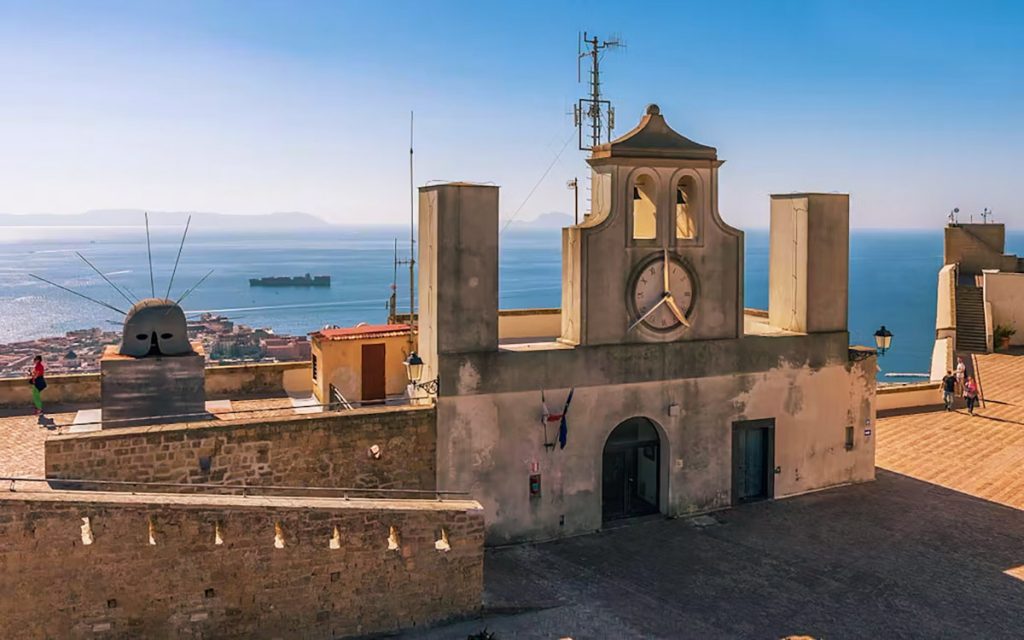
- Naples Cathedral (Duomo di San Gennaro) – Famous for the relic of San Gennaro and the annual miracle of the liquefying blood.
- Palazzo del Principe (Royal Palace of Naples) – Once the seat of Spanish and later Bourbon monarchs, this grand palace on Piazza del Plebiscito is richly decorated with royal apartments, historic furnishings, and portraits of Naples’ rulers. Its façade and courtyards are some of the city’s most iconic sights.
- Galleria Umberto I – A 19th-century glass-domed arcade near the Teatro di San Carlo, combining elegant architecture with shops and cafés. Its soaring iron-and-glass roof makes it one of Naples’ most striking landmarks.
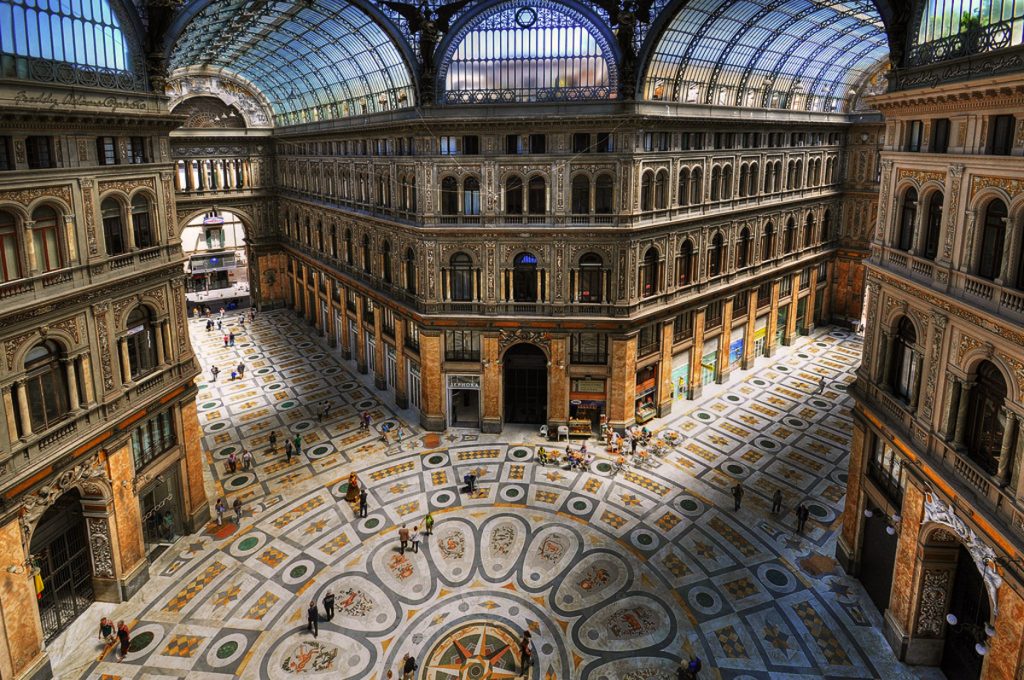
Museums & Culture
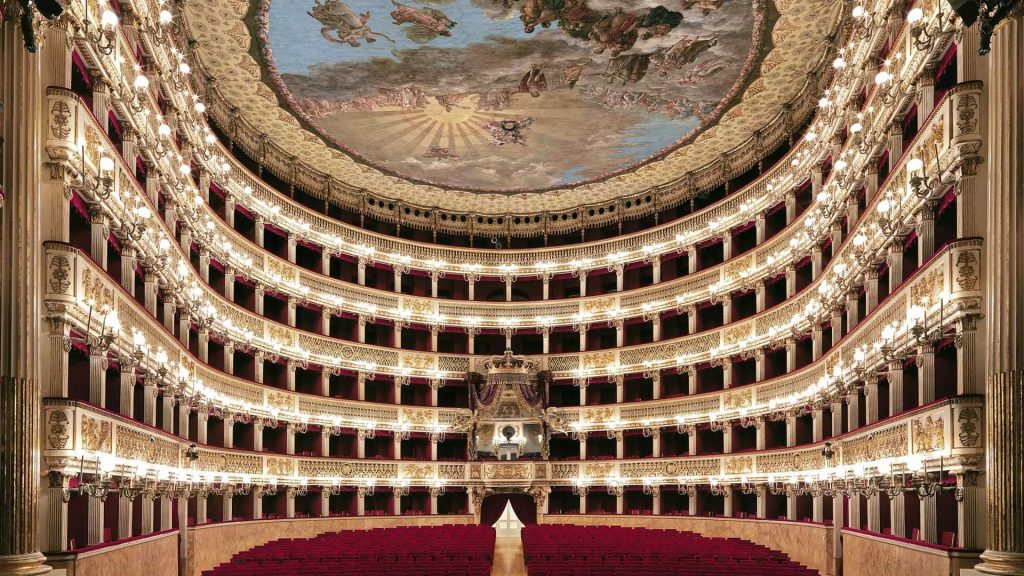
- Teatro di San Carlo – The oldest continuously operating opera house in Europe, dating back to 1737. Its gilded interiors and world-class performances make it one of Naples’ crown jewels.
- National Archaeological Museum – Holds the most extensive collection of Pompeii and Herculaneum artifacts, from mosaics to frescoes.
- Capodimonte Museum – A royal palace turned art gallery, filled with Caravaggio, Raphael, and Titian.
- Museo Cappella Sansevero – A small but extraordinary museum-chapel, most famous for the Veiled Christ, a marble masterpiece so delicate it looks like real cloth draped over the body.
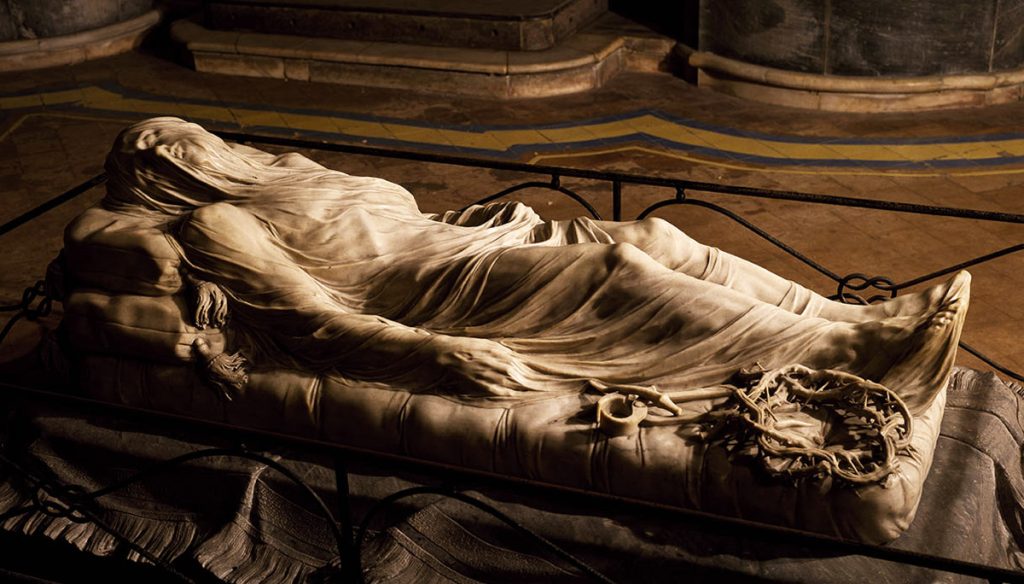
Naples’ Underground City
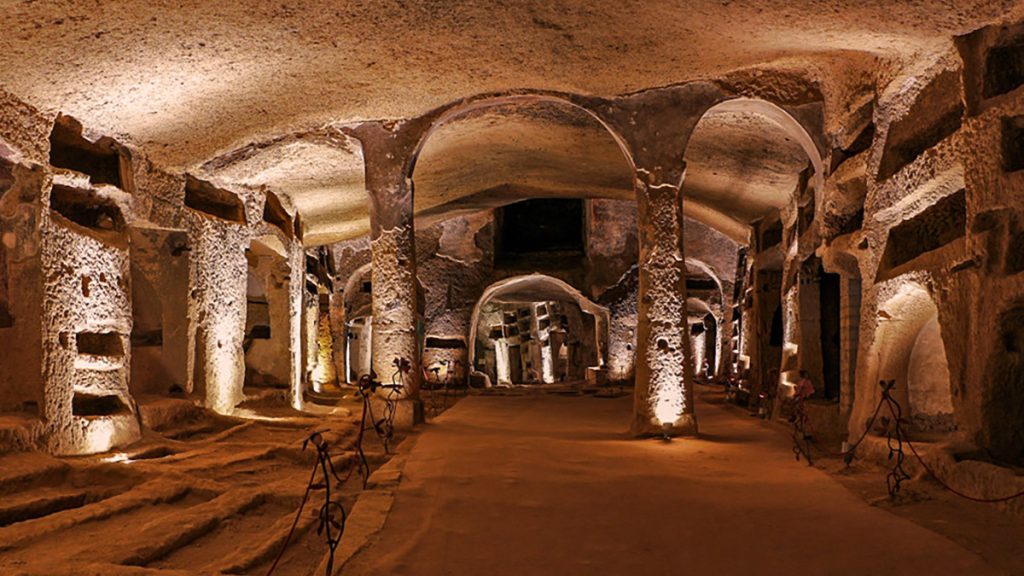
Beneath the noisy streets lies an entirely different Naples: a hidden labyrinth that reveals the city’s deepest history. Exploring here feels like stepping into another world:
- Napoli Sotterranea Tour – Descend into ancient Greek quarries and Roman cisterns, where candle-lit tunnels and chambers stretch beneath the city.
- World War II Shelters – Vast underground spaces once used as bomb shelters, telling stories of Naples’ resilience during the war.
- Catacombe di San Gennaro – Expansive early Christian burial chambers decorated with frescoes and mosaics, among the most important underground sacred sites in Naples.
- Galleria Borbonica – Built in the 19th century by order of King Ferdinand II, this impressive underground passageway was originally a military escape route and later used during WWII. Today, it’s one of Naples’ most fascinating hidden tours.
- Aqueducts & Passageways – Ingenious systems carved through the rock, once supplying water to the city for centuries.
This hidden underworld shows just how layered Naples truly is—history upon history, stacked both above and below ground.
Neighborhoods to Explore
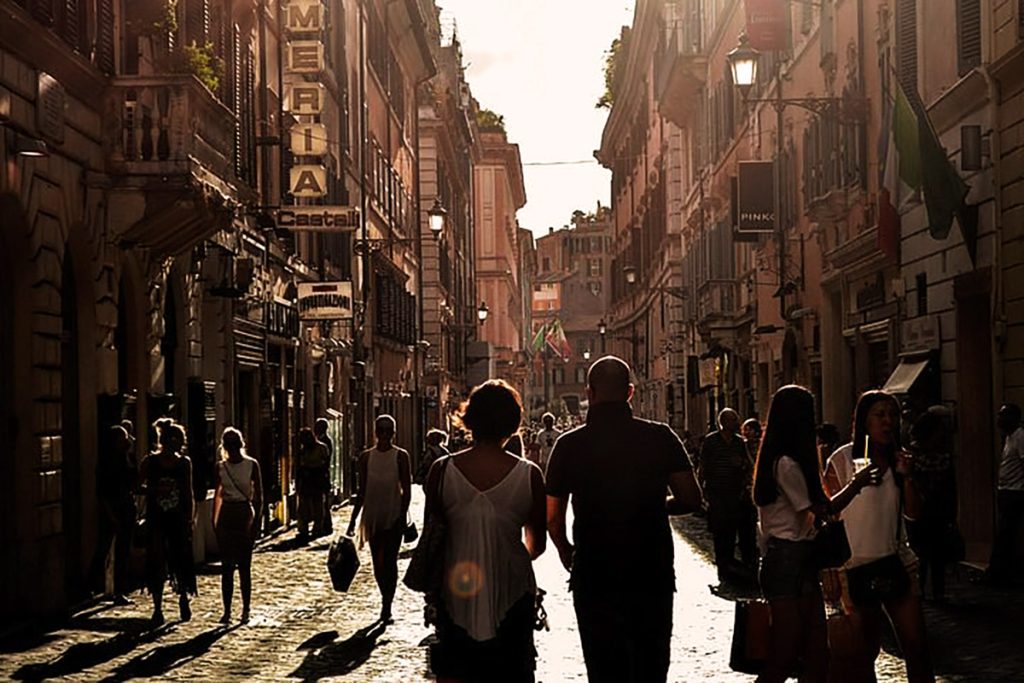
- Spaccanapoli – A historic artery where churches, shrines, and trattorias line a narrow street that slices through the old town.
- Quartieri Spagnoli – Lively, authentic, and chaotic, this neighborhood pulses with daily life and some of Naples’ best street food.
- Chiaia – A chic district with boutiques, waterfront views, and elegant cafés perfect for a sunset stroll.
Food: The Soul of Naples
Naples is synonymous with pizza, but its culinary heart beats much wider. Here are some standout places across all price ranges:

- Budget
- L’Antica Pizzeria da Michele – World-famous, no-frills, and serving only a couple of pizzas (Margherita and Marinara). Expect lines, but it’s worth it.
- Sorbillo – A lively spot on Via dei Tribunali where the pizza is big, fluffy, and perfectly charred.
- Tandem – Known for its slow-cooked ragù, one of Naples’ most traditional comfort dishes.
- Mid-Range
- Trattoria da Nennella – In the Quartieri Spagnoli, this chaotic but charming trattoria serves hearty Neapolitan classics with lots of personality.
- Pizzeria Starita – Another historic pizzeria, loved by locals, offering both traditional and creative toppings.
- La Locanda Gesù Vecchio – A warm and welcoming place where you can try homemade pasta, seafood, and local specialties.

- High-End
- Palazzo Petrucci – A Michelin-starred restaurant by the sea, combining Neapolitan traditions with modern fine dining.
- Veritas – A stylish, contemporary Michelin-starred spot focusing on seasonal ingredients and refined presentations.
- George Restaurant (at Grand Hotel Parker’s) – Elegant dining with panoramic views over the Bay of Naples and Vesuvius, ideal for a special night.
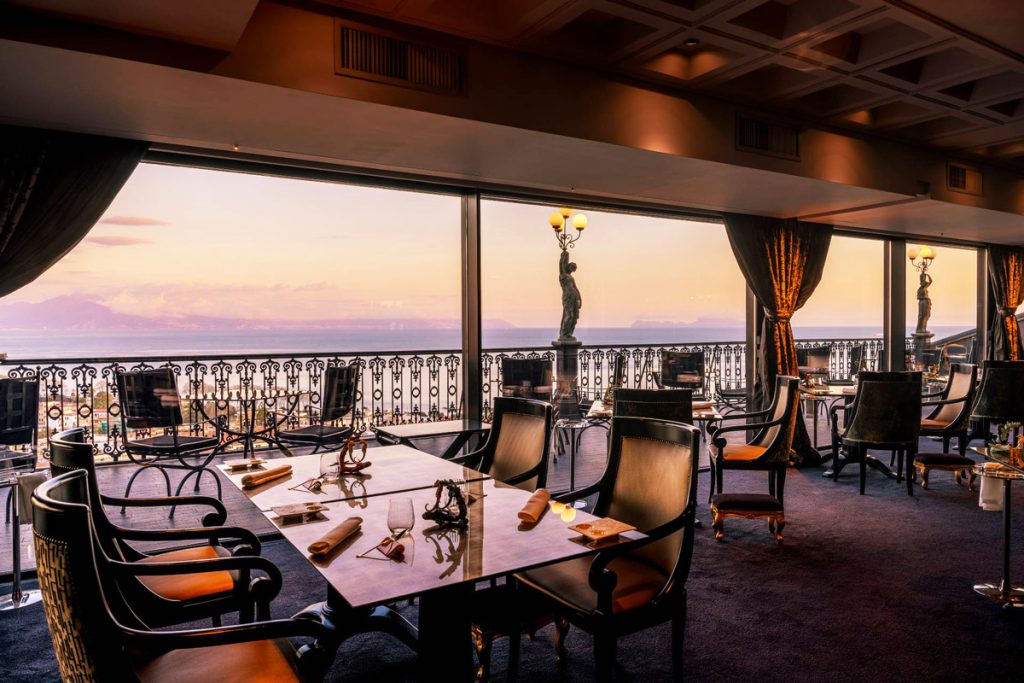
Shopping in Naples
Beyond its landmarks and food, Naples is also a city where shopping blends luxury with local craftsmanship.
- Via Toledo & Galleria Umberto I – The city’s bustling shopping street and historic glass-domed arcade, home to both big-name brands and local shops.
- Via Chiaia & Vomero – Trendy districts filled with boutiques, designer stores, and stylish Neapolitan fashion.
- Campomarzio70 – The essential perfume boutique in Naples, part of a historic Roman chain specializing in rare and artisanal fragrances. A stop here feels like stepping into a temple of scent, perfect for bringing home something unique.
- Local Markets – Explore Pignasecca Market or Porta Nolana for a taste of authentic Neapolitan life, where street vendors sell everything from fresh seafood to vintage finds.
Hidden Gems
- Lungomare Caracciolo – A seafront promenade with sweeping views of Vesuvius and Capri.
- Catacombs of San Gennaro – Vast underground burial chambers, less crowded but deeply atmospheric.
- Via San Gregorio Armeno – Known for its year-round nativity workshops and quirky figurines.
Spotlight: Pompeii
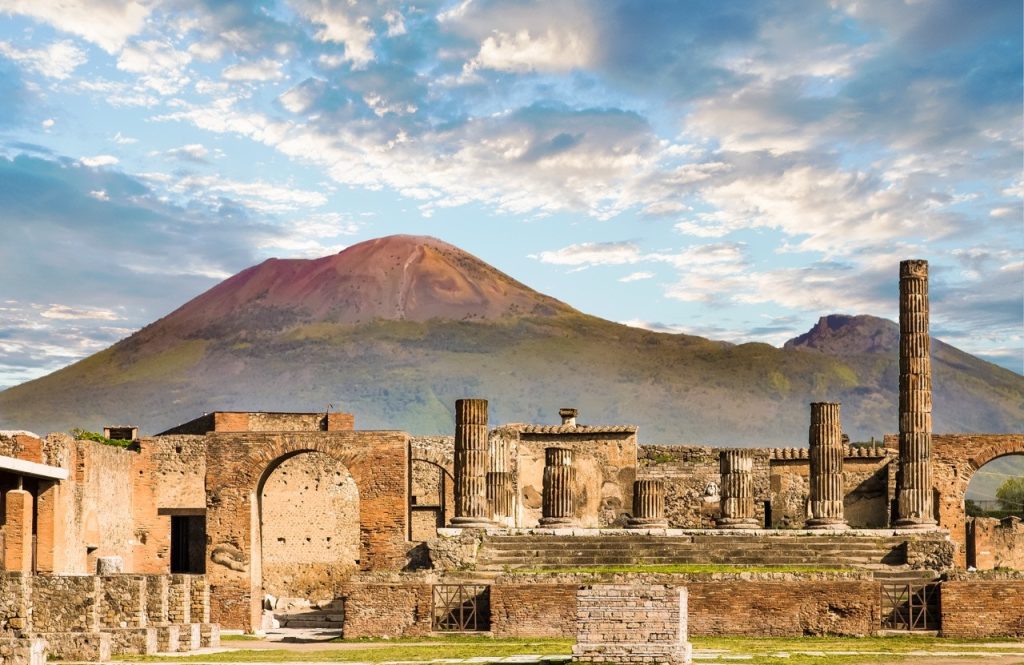
Few places on Earth capture history like Pompeii, a city frozen in time after the eruption of Mount Vesuvius in AD 79. When the volcano erupted, a cloud of ash and pumice buried the city almost instantly, preserving its streets, homes, and even the everyday lives of its residents. Today, walking through Pompeii is like stepping back nearly 2,000 years into the Roman world.
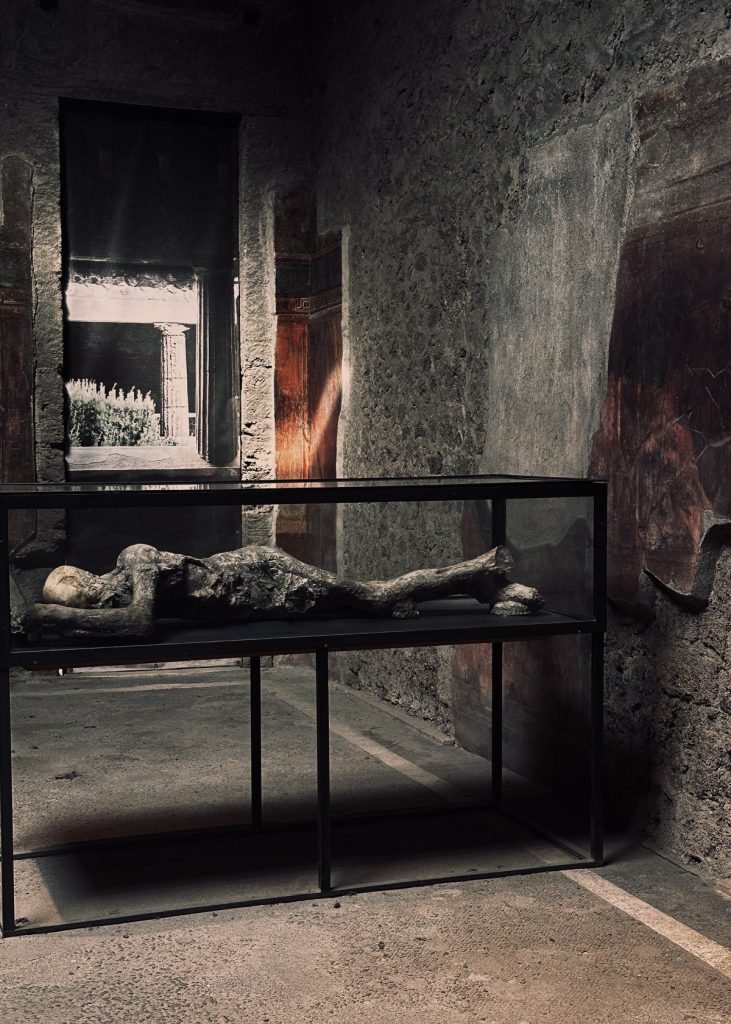
Highlights include:
- The Forum – Once the civic and social heart of Pompeii, surrounded by temples and public buildings.
- Villa of the Mysteries – Famous for its extraordinary frescoes depicting secret Dionysian rituals, remarkably vibrant despite the centuries.
- The Amphitheater – One of the oldest surviving Roman amphitheaters, predating even the Colosseum in Rome, where gladiators once fought.
- Baths and Bakeries – Public bathhouses and ancient bakeries still stand, offering a glimpse into Roman daily life.
- Plaster Casts – Heart-wrenching casts of victims who perished in the eruption, their final moments captured in haunting detail.
Pompeii is massive—large enough that you could spend an entire day exploring its streets, villas, and public spaces. For a more in-depth experience, many visitors pair it with a guided tour that explains the social, cultural, and architectural nuances of Roman life. Together with Herculaneum, it remains one of the most significant archaeological sites in the world and a must-see journey into the past.

Day Trips from Naples
Naples’ location makes it a springboard to some of Italy’s most iconic destinations.
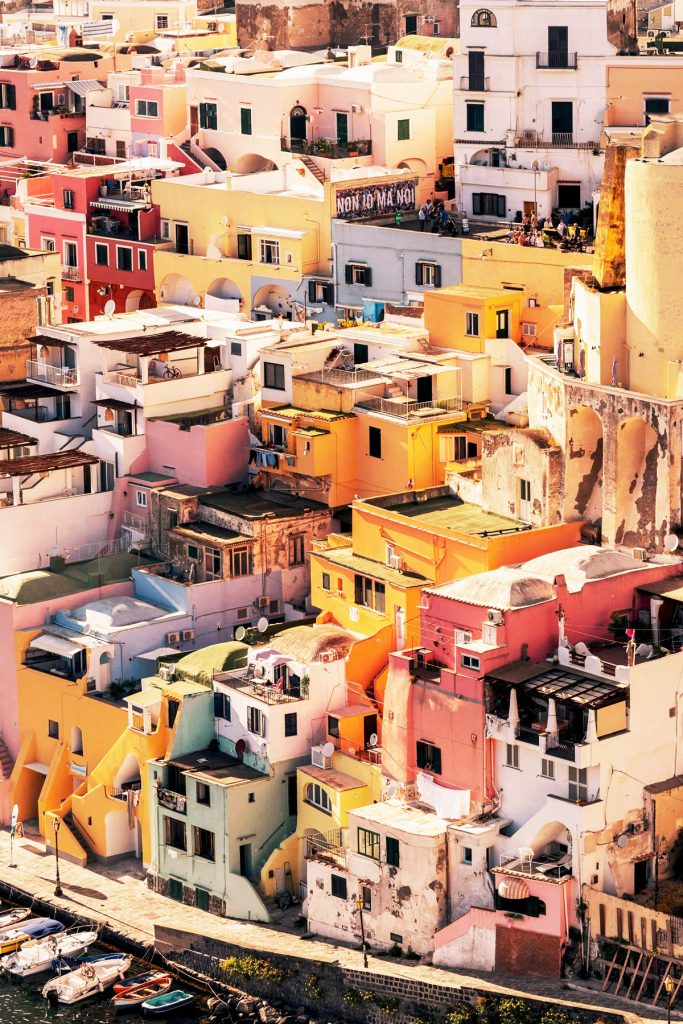
- Procida – The smallest island in the Bay of Naples, Procida is pure Mediterranean charm. With pastel-painted houses, narrow lanes, and fishing boats bobbing in the harbor, it feels timeless and intimate. It was named Italy’s Capital of Culture in 2022, and unlike Capri, it remains blissfully low-key.
- Herculaneum – Less crowded than Pompeii but equally fascinating, with better-preserved villas and mosaics.
- Amalfi Coast – Positano, Amalfi, and Ravello offer some of Italy’s most breathtaking views.
- Capri – A glamorous island escape with chic boutiques, the Blue Grotto, and dramatic cliffs.
- Mount Vesuvius – Hike up the volcano itself for an awe-inspiring view over the Bay of Naples.
Practical Tips
- Be street-smart—petty theft can happen in busy areas.
- Comfortable walking shoes are essential, especially with cobblestones and uphill climbs.
- Naples is best enjoyed slowly: sip your coffee, linger over meals, and let the city’s chaos become part of the charm.
Final Thoughts

Naples, or Napoli, is a city of contrasts—chaotic yet captivating, gritty yet full of beauty. From underground passages to world-famous pizza, from haunting ruins to colorful seaside escapes, Naples offers an experience that is raw, vibrant, and unforgettable. It’s not a city that simply welcomes you—it insists you live it fully.

